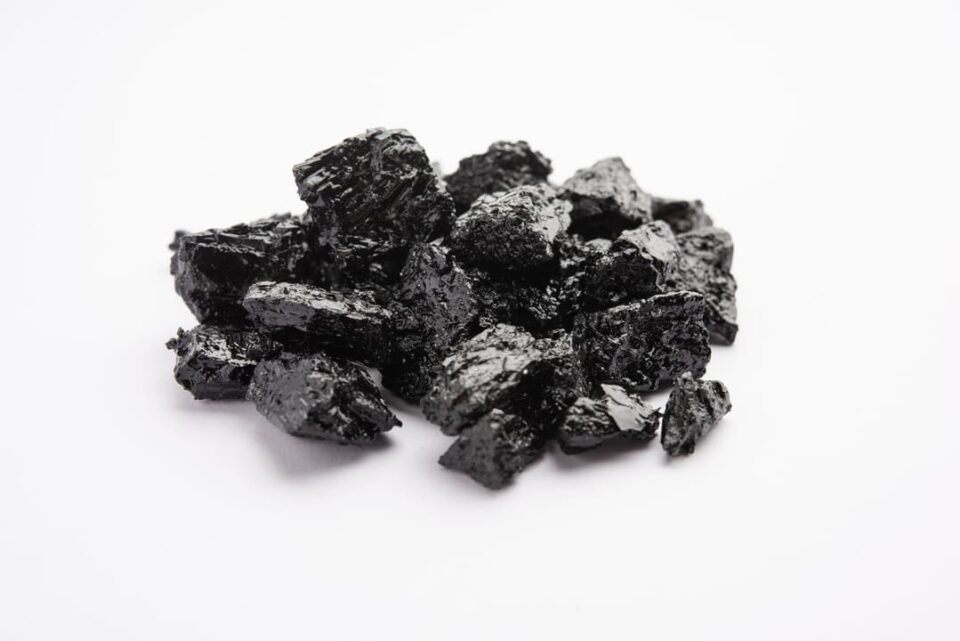Nandita is a 21-year-old pharmacy student. She was always known for her luscious, jet-black hair, which cascaded down her back like a waterfall. However, Nandita noticed a few strands of grey hair sprouting amidst her dark mane over the past year. Understandably, she was concerned. After all, who expects to find grey hair in their early twenties?
Nandita’s case is not uncommon. Many young individuals like her are curious about natural remedies to combat premature greying and enhance hair growth. This led her to research various options, including shilajit, a substance often hailed as a miracle ingredient in traditional Indian medicine. As an Ayurvedic doctor, I was intrigued by Nandita’s inquiry and decided to delve deep into the scientific evidence surrounding shilajit’s potential to combat grey hair and promote hair growth. Let me share my findings with you.
What is Shilajit?
Shilajit, also known as “the conqueror of mountains” in Sanskrit, is a sticky resinous substance that oozes from the rocks of the Himalayan and Altai mountain ranges. It has been used for centuries in Ayurveda, for its health benefits.
My Personal Experience
Before we dive into the scientific aspects, let me share my own experience with Shilajit. A few years ago, I encountered a patient who had remarkable results with shilajit supplementation. She had been struggling with premature greying and hair loss, much like Nandita. After incorporating shilajit into her daily routine, her hair stopped greying and became thicker and shinier. This case piqued my interest and motivated me to explore the scientific literature on shilajit’s effects on hair health.
The Science Behind Shilajit and Hair Health
Nandita, like you, was likely drawn to Shilajit by its reputation as a natural hair tonic. But does it live up to the hype? Let’s examine the scientific evidence.
1. Rich in Essential Minerals
Shilajit is a rich source of essential minerals such as fulvic acid, iron, and zinc. These minerals play a vital role in maintaining the health of your hair follicles, which are responsible for hair growth.
2. Antioxidant Properties
Premature greying often occurs due to oxidative stress on hair follicles. Shilajit boasts potent antioxidant properties, which can help protect your hair from premature greying by combating oxidative damage.
3. Promotes Blood Circulation
Proper blood circulation to the scalp is crucial for hair growth. Shilajit has been shown to improve blood circulation, potentially leading to enhanced hair follicle nourishment.
4. DHT Blocker
One of the common causes of hair loss is the hormone dihydrotestosterone (DHT). Shilajit may help inhibit the production of DHT, thus preventing hair loss.
All About Shilajit for Grey Hair and Hair Growth
Now, let’s address some common questions you may have about Shilajit’s role in combating grey hair and promoting hair growth.
1: How should I take shilajit for hair benefits?
Shilajit is available in various forms, such as capsules, powder, or resin. Consult with an Ayurvedic doctor for personalized guidance on dosage and administration.
2: Is Shilajit safe to use?
Shilajit is generally considered safe when used as directed. However, consult your doctor, especially if you have underlying medical conditions.
3: How long does it take to see results?
Results may vary from person to person. Some individuals notice improvements in hair health within a few weeks, while others may take longer.
4: Are there any side effects of shilajit?
Shilajit is well-tolerated by most people. However, some individuals may experience mild side effects like digestive discomfort. It’s essential to start with a lower dose and monitor your body’s response.
5: Can Shilajit reverse grey hair completely?
Shilajit may slow down or prevent further greying, but its ability to completely reverse grey hair depends on individual factors.
6: Can shilajit be used topically for hair?
Some people use shilajit-infused hair oils or masks. While this can nourish the scalp, its effectiveness is not so great.
7: Are there any contraindications for shilajit?
Shilajit may interact with certain medications or medical conditions. Always consult an Ayurvedic doctor before adding it to your regimen.
8: Can women use shilajit during pregnancy or breastfeeding?
It’s best to avoid shilajit during pregnancy and breastfeeding, as its safety in these situations is not well-established.
9: Are there any dietary recommendations to complement shilajit use?
Eating a balanced diet rich in vitamins and minerals can complement the benefits of shilajit for hair health.
10: Where can I purchase high-quality shilajit?
Look for reputable brands and sources when purchasing shilajit to ensure its purity and authenticity.
Conclusion: My Take on Shilajit for Grey Hair and Hair Growth
The scientific evidence suggests that shilajit holds promise as a natural remedy to combat premature greying and promote hair growth. While individual results may vary, the rich mineral content, antioxidant properties, and potential DHT-blocking effects make shilajit an intriguing option for those seeking healthier hair.
I encourage you to explore shilajit under the guidance of a healthcare professional, taking into account your unique needs and circumstances. Remember, maintaining a healthy lifestyle, including a balanced diet and stress management, is essential for overall hair health.
As an Ayurvedic doctor, I remain cautiously optimistic about shilajit’s potential benefits for hair. I hope this information helps you make an informed decision about whether Shilajit is suitable for you. If you decide to give it a try, I wish you a journey towards healthier, more vibrant hair.

